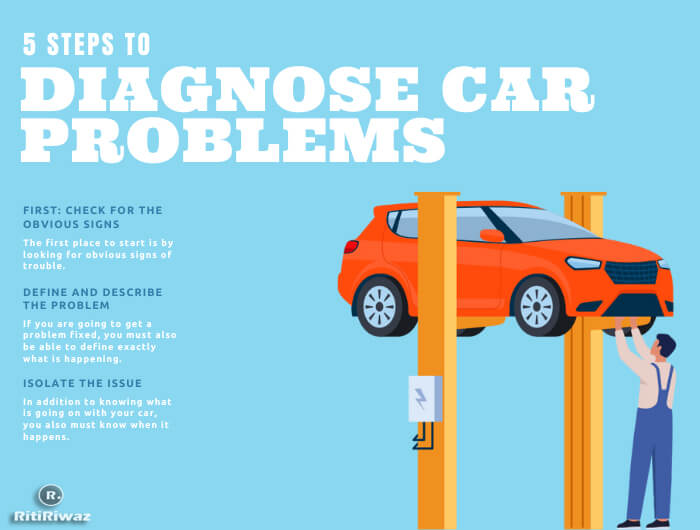The 5 Steps to Diagnose Car Problems

Having a mechanical issue with your car can lead to more problems, such as missed work or getting stuck on the side of the road. Follow these steps at the first sign of a problem to diagnose it. Then you can order the correct auto parts and get repairs underway.
1. First: Check for the Obvious Signs
The first place to start is by looking for obvious signs of trouble. For example, a loose part or disconnected wire is a pretty clear indicator of the problem. With a little luck, this will identify the problem and lead you to a quick fix.
2. Define and Describe the Problem
If you are going to get a problem fixed, you must also be able to define exactly what is happening. Make a note of any odd sounds, vibrations, and lights that come on. If you are unsure about a specific connection, it is often helpful to look at pictures such as vehicle wiring diagrams to get a sense of the general layout.
3. Isolate the Issue
In addition to knowing what is going on with your car, you also must know when it happens. For example, does it only occur when you turn the wheel a certain way or go over a specific speed? Pay attention to exactly when and where the issue pops up. Make detailed notes after each occurrence. With any luck, this will help isolate the problem and possibly let you recreate it under better diagnostic conditions.
Isolating the issue gives you powerful insight into potential causes. It can help you identify potential connections and vehicle systems that might be contributing to the problem.
4. Using Diagnostic Tools to Get to the Bottom of the Problem
Diagnostic tools are more accessible than ever before. Where you used to have to head to a certified mechanic for a system scan, you can now do the same thing at home with handheld scanners. If you don’t want to invest in a diagnostic scanner, many auto repair shops have one available for customer use.
Diagnostic tools generally provide error codes produced by a car’s computer. This may not tell you exactly what is wrong, but it can point you in the right direction. In most cases, it will give you the car system that is causing your trouble, along with a list of possible causes for that particular code. You can then use this information to pinpoint the problem.
5. Make Necessary Repairs
Making repairs may not seem like a diagnostic step, but it often falls into that category. For example, if you are still experiencing problems after making a repair, then you know there is something else that must be addressed. Before you start repairs, you must have the correct parts. Use your vehicle’s VIN number to ensure any components you purchase are compatible with the model and trim level of your car.
Diagnosing a car problem can be frustrating. However, following a few steps, such as looking for obvious problems, following diagrams, and using a diagnostic scanner, can help you find the issue. Once you do, use a VIN lookup at an online parts store to find the correct parts for your repair.
Suggested Read: Must-Have Smartphone Apps for Travel Lovers






